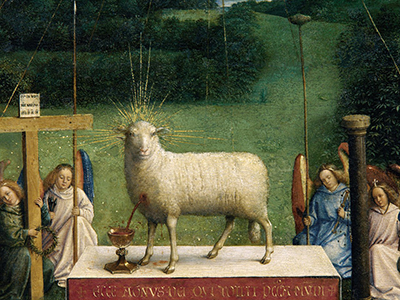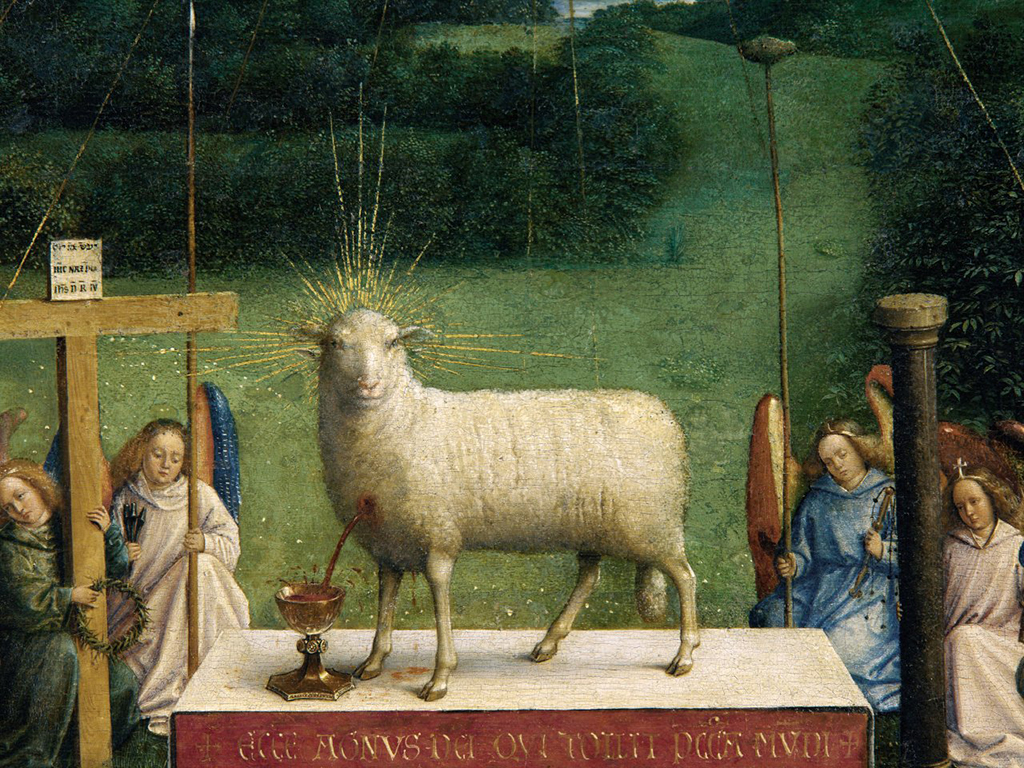 Buy Art Prints Now
Buy Art Prints Nowfrom Amazon
* As an Amazon Associate, and partner with Google Adsense and Ezoic, I earn from qualifying purchases.
The Adoration of the Mystic Lamb is a key panel within the triptych known as the Ghent Altarpiece. It is not only a stunning artwork but also holds an important symbolic value to the Christian religion.
The extraordinary scene in front of us captures a lamb standing upon a small table whilst a group of people close by stand in adoration. The panel itself features in the centre of the front of the altarpiece, in the lower half. Above it a portrait of God the Father and two further narrow portraits that flank it either side. Jan van Eyck likely would have taken on these paintings entirely himself, because of the prominent position in which they were to be displayed as part of the overall piece. Other panels would probably have featured work by some of his assistants as well as his brother, Hubert, who is known to have contributed considerably to some parts of this project. The overall construction produced something which remains a key part of Jan van Eyck's oeuvre and also stands proudly within the overall highlights of the Northern Renaissance, which featured some of the best artists to have come from the Netherlands, Belgium and Germany. We have discussed the panel in more detail in this Adoration of the Lamb page.
The detailed image of the lamb featured below underlines the extraordinary level of detail added to each and every panel within this altarpiece. This is a cropped part of a far larger piece, yet still we see each and every part of the lamb faithfully reproduced, alongside some stunning lettering which comes across the front of the table. There is also a small silver cup which shines brightly as well as some carefully crafted bushes and grass behind. Van Eyck was highly skilled in a number of different genres, which was perhaps one of the secrets of his success. Landscapes feature in a number of his best paintings, though not by themselves but as supporting elements to portraits or religious themes in the foreground. At this stage in art history landscape art was not considered a genuine genre in its own right, but this would eventually change in the following centuries.
This whole region of Northern Europe would produce some of the finest names in art history, over the course of just a few centuries. For example, we are all aware of Van Eyck's contributions, but other notable names included the likes of Vermeer, Cranach, Bruegel and Bosch, each of which held their own particular style but worked within the charming approach taught in this region. Many loved to feature the grassy rolling hills of the countryside as well as featuring the lives of ordinary folk going about their daily lives. Whilst charming, there were also considerable technical advancements that came about from these great names and this whole period remains highly respected today by academics and the public alike and is also taught in detail within most art history studies which focus on European art.




